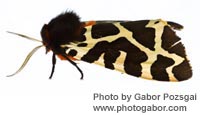 This page has been mothballed.
This page has been mothballed.
It is no longer being updated but we've left it here for reference.
Background to the New landcover of Scotland
Land Cover of Scotland 1988 (LCS88) was the first national census of Scotland and provided baseline information on rural land cover at a scale of 1:25,000.In the early 1980’s awkward questions were being asked in the British parliament about the state of environment. Concerns were expressed over the effects of such things as global warming and increased pollution on the landscape and on vegetation cover. It was decided that a land cover baseline was needed against which to measure future possible changes. In Scotland, this took the form of an air-photo census of the entire land area of the country: Land Cover of Scotland 1988. This was done at the Macaluay Institute and has been one of our core datasets over the last few years. These photos were interpreted and the land cover information transferred into a GIS. This was the first ever national land cover census, and one that was aimed specifically at upland semi-natural vegetation.
The cover features were interpreted from aerial photographs and mapped onto the OS 1:25,000 pathfinder map series. The classification system was developed specifically to provide information on semi-natural cover features, so that the greatest detail (at the lowest level in the hierarchy) relates to natural and management features within these cover types. LCS88 has 126 major classes. This was felt necessary to preserve the detail of the ground cover, especially in the upland or moorland areas – which cover some 80% of the land area. Mosaics, consisting of a dominant and subdominant class, were also permitted where the interpreter was unable to separate out different land covers (for instance as part of heather cycling and regeneration, patches of grass establish and then become recolonised by the heather). The heather and grass example is an uncontroversial, widespread, illustration of how the mosaics came about. Some of the mosaics were very region specific and this gave rise to some 1300 classes, and 969 of them in total covered only 1% of the country.
It was always intended that the 1988 LCS be used as a baseline for monitoring change and 10 years after the originial LCS88 is out of date and it is time for a repeat. The context within which this investigation is taking place is one of the current demand for complicated scientific issues to be solved quickly, cheaply, and accurately.
So novel approaches ae being considered here at the Macaulay Land Use Research Institute. Due to the advances in technology over the past decade, future LCS will be able to provide a series of other products along with an updated cover map.
Over the past year a consortium comprising members of many Scottish Office departments and agencies have been exploring their common use of aerial photography to support a wide range of intelligence gathering and mapping projects via the Land Cover of Scotland steering group. This work has led to the view that aerial photography is a key shared resource and would benefit from improved management. Currently aerial photography is often difficult to obtain and is only available as photographic prints. The aim of the “New Image of Scotland” project is to remove these constraints using new digital technology. This will allow us to create an up-to-date high-resolution map-related image of the entire land area of Scotland. This will be easily accessed and available in digital form.
At the last steering group meeting it was decided that in order to progress with the New Image of Scotland project (and thereby a new Land Cover of Scotland), support from within the Scottish Office was needed. The point had been reached where the technical specifications and potential business structures for an ortho-rectified image-base for the entire country had been determined. It was felt that without overt support for the project from within the Scottish Office the project cold not move forward. A briefing paper detailing a review of the technical options, the increased emphasis on the value of the aerial photography, the division of the path to a land cover map into 5 phases, the approximate costs and potential funding models was passed into the Scottish Office in April this year. This was positively received and enabled progression to a formal presentation of proposals through a seminar.

